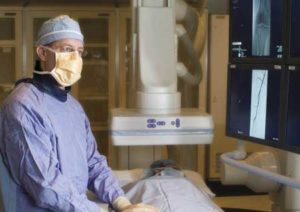The renowned journal, Diagnostic and Interventional Imaging has recently published a study that unveiled some important facts. One of these was the benefit of imbibing specialist IR teams into the treatment process of emergency department patients. The survey asserted that involving interventional radiology teams in surveys about primary trauma can yield better results.
The Scope Of IR Procedures
Of late, the incorporation of IR methods to handle emergencies has increased. However, its precise impact on the survival chances of the patients is not completely clear to date. According to the survey, with the revelation in place that IR team integrations help handle the initial trauma levels, institutions can now devise new protocols to impact the process holistically.
The Survey Hypothesis
Ichiro Okada works with the Department Of Trauma and Critical Care Medicine of Tokyo’s Disaster Medical Center under NHO. Okada, along with others hypothesized that the involvement of IR teams in primary trauma surveys conducted 24X7 could enhance the survival chances of the patient requiring IR methods to a considerable extent.

The Crosschecking
To be sure and precise about the impact of IR methods in dealing with patients, the team of researchers widened its area of study. It compared the outcomes of 160 patients who were hemodynamically stable with the unstable ones.
For each category they considered patients availing and not availing of IR methods from 2012 to 2019. The team further analyzed the chances of survival of each of these patients with those discharged from hospitals.
125 patients belonged to the stable group and 35 to the unstable one. As the team implemented IR methods, the results showed a noteworthy trend. The survival rate of the stable group was higher by 4.9 % while that of the unstable group was more by 24.6%.
The average survival rate of the unstable group was around 91.4%. The stable group had a survival rate of 96%. IR methods took around 54 minutes to get started for the unstable group.
The authors further mentioned that involving IR teams allows the opportunity for discussion with surgeons. This interactive exchange is particularly helpful during the stabilization of patients. The time needed to get critical interventions for survival reduces with such arrangements.
The authors asserted that IR team involvement contributes to efficient decision-making without any delay. Therefore, the chances of survival increase for every patient. With more application and integration of IR team procedures, the medical care sector can reap improved results.
Sepstream® is one of the most reliable names in the domain of imaging. We offer cutting-edge technology and unparalleled assistance. Our intuitive solutions offer fast and flawless imaging. With every passing day, we aim to upgrade our software to offer better solutions at pocket-friendly prices.